From the very first articles about wooden houses, passive houses and energy efficiency in construction, I have constantly come across two names: Marius Șoflete and Creative Engineering. The precise, intense way of conveying information, the simple and direct language that makes even those less initiated in the field of construction understand principles, phenomena and technical processes immediately attracted us. Marius Șoflete came up with a new approach, totally different from what we had seen before. In addition to consistent information on how to build, building materials and modern technologies, he came with a holistic approach to the field, linking design, with architecture, construction, installations and the end client. This new approach is put into practice through Creative Engineering, the design office Marius set up in 2013, which he has been joined since 2017 by Octav Timu and Cătălin Caraza, friends since university.
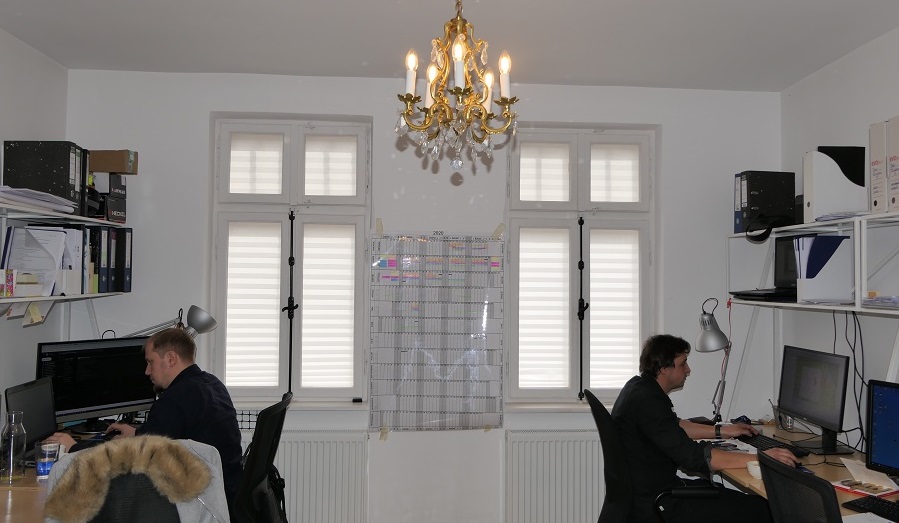
Everything is based on the passion for the construction field and especially for wood construction and the incredible experience gained in a very short time. Marius has an overflowing energy and an incredible work power. Together with his colleagues at Creative Engineering (a team that has grown and is looking for new colleagues) he works passionately in the office and on the building sites, continuing to be an important source of information for professionals, enthusiasts and future house owners.
We spent two days at Creative Engineering trying to understand where their passion comes from, what problems they face, how they want to change the construction field, where they get so much energy and work power from. Because Marius Șoflete, soflete.ro and Creative Engineering means design, site assistance, courses in construction and architecture faculties, courses on passive houses and energy efficiency together with the Romanian Order of Architects (OAR) and INCERC - Institute for Research in Construction, workshops in factories, information material for the website, filming in factories and on construction sites.
Wood Magazine (RdL): What it means soflete.roas a team, as a business strategy. How does it combine with Creative Engineering?
Marius Șoflete: Soflete.ro is a spin off of Creative Engineering. It spun off from the Creative Engineering office formed in 2013 and bears my name because it is based on my own personal experience in the construction industry. I have had a wealth of experience in a very short time, very condensed and very varied. From PRISPA, the first solar house project made in Romania and which participated in the international solar house competition (Solar Decathlon Europe(n.r.), the first certified passive house project on wood, the first certified straw bale house, the first straw bale school or the mountain refuge made of wood, built by helicopter at Caltun. Initially I spoke about these projects in limited circles, then I started to give courses, through the Romanian Order of Architects (OAR), on timber construction and energy efficiency, all based on practical and applied experience. Going from one project to another and talking about it, repeating the speeches, we decided to make them on video, as it is easier to talk about them.
Blog initiative (soflete.ro(n.r.), which actually started in February 2019, was Dariushe was the catalyst in this whole thing. We had the office together in Cluj, the physical office, we didn't work together, he was with his firm, he's an architect, I was with my engineering office. It was the same way we function here (in Bucharest). The office means that 2-3 companies get a space together where we work together. In this job you isolate yourself, you stick to the computer and you don't interact with anyone, we end up having a competition in the evening who leaves the office last. We used to get 2-3 at night with Darius and me at the office, who kept bugging me that he wanted to film everything I was explaining and telling him in the projects he was working on.
Soflete.ro actually started as a spin off, out of a desire to communicate my experience, but also to bring clarity and quality information to the building process. I was involved in the design, but I was also involved in the execution, I was very much with the beneficiary. In the early years of design, especially in the early projects, I was also emotionally involved, beyond the job description, helping people get their homes completed. I've also had a number of experiences in this area, seeing what people go through, from the design side, to execution, operational issues, costs and so on. I was keen to talk about that experience as well: here's what you have to do, what stages you have to go through, what you have to take care of. Because when you build a house or when you buy a house, you need several tens, even hundreds of thousands of euros and that involves a lot of emotional stress.
Although Marius and his team are structural engineers, the approach to the topics on soflete.ro is not only from this point of view. It comes with an overview. The architect, the material supplier, the builder and the beneficiary are all included in the same picture.
In all this series of courses I've done and through interacting with over 1000 designers in the courses, I've also seen through the design teams problems, frustrations, misunderstandings, misunderstandings. I said OK, these things need to be communicated in plain language, in a language where people understand what we do. Not us as a design office, but us as a guild, the design guild. I've been involved in other projects and I've seen that in specialist circles they communicate in a closed circle. Architects do annuals and biennials, engineers do super technical conferences that only engineers can understand. You go to building material fairs, builders only communicate with each other. And there's someone else in the whole picture, the beneficiary. The vast majority of the beneficiaries I've interacted with over the last 4 years are self-taught. They are people who research, who read, who research, and the discussions with them were almost professional to professional, I didn't have to convince anyone, I just confirmed. I also noticed this need for documentation, for information before starting. The people who are doing their own homes are somehow around my age, they are often entrepreneurs, they don't buy without researching. Plus, we live in a hyper-informational age where anything you want you can find out at a click away. But how can you tell if the information you find is good?!
All of this catalyzed the project that was supposed to be a platform for construction communication and the easiest name to find tied itself to me. Because the site is very much my vision, because I have also had the opportunity to be involved in challenging and innovative projects in an extremely short time. I started by telling some of the projects and some of the problems I encountered. We always talked about problems and solutions: how to waterproof properly, how to seal properly. In addition, I also started to tell part of the course I was teaching. And from each situation, problem, case I made a story. Because I couldn't get everywhere I was needed anymore, I started doing a series of online courses. Courses organised through the OAR. I also brought the passive house designers course into the country. We got sponsorship, translated it into Romanian with our own money and gave it to the OAR, which is now running the course. Soflete.ro is a platform for communication and information in construction and a project that I like more and more.
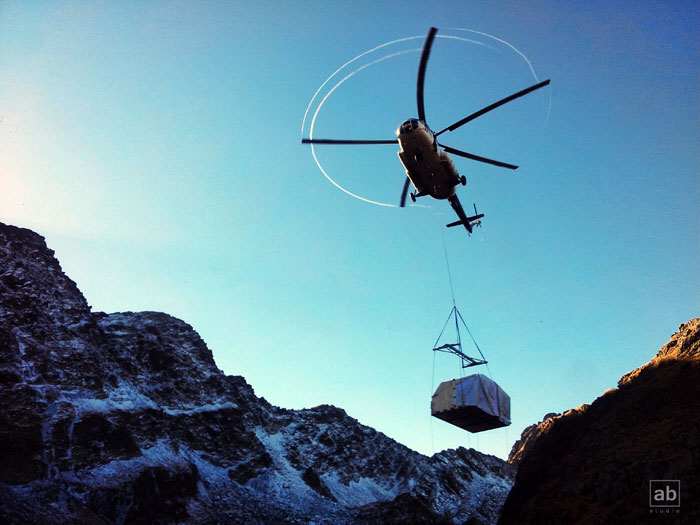
designist.ro
RdL: Let's talk about Creative Engineering. How does Creative Engineering combine with schoflete.ro? What is Creative Engineering?
It is a design office, structure-oriented and very much wood structure-oriented. I think at the moment we are the largest design office, mainly dedicated to timber structures. We are a construction engineering design office. In 2013, after my experience in PRISPA, I tried to work in other offices, but I felt I didn't fit in, so I went out on my own as a PFA. I had a few work experiences, realised what it was all about, then I partnered with Catalin și with Octav, college mates, roommates and "suffering" at Prispa.
After PRISPA, we all went everywhere, we didn't hear from each other for about 6 months. We had been together too long, it had been a hard project and we needed a break. After finishing university - they are a year younger than me - Octav and Catalin took a year and a half job to get experience. Then more and more projects started coming to me and I gave them one more every weekend until I couldn't handle it anymore. And then I said "guys, we have two choices, either we partner or we partner". That's how Creative Engineering was born, in 2017, in its current legal and factual form.
The Solar Decathlon experience is at the core of Creative Engineering as a philosophy. We went to engineering school. On the diploma it says structural engineer or structural engineer, we were supposed to be just doing structures. But in this competition (Solar Decathlon) working on the structural part was only 10% of the project, 90% was something else - because we did everything from mock-ups to presentations, fundraising, communication, research, etc. Going into this project we could see a holistic construction project, i.e. we went from the structural area to the technical design area. Look, for example, we made the first certified passive house in Romania, EvoHouse in Cluj. If you talk about passive house, you mean building physics, i.e. the interaction of the house with water, vapour, moisture, air, fire, wind and all other forces and energies. As a structuralist, we only manage some of the forces. Who actually manages the other, technical stuff? That's how we started to see the interactions between materials and other situations that were basically not in the job description.
Creative Engineering is the office that deals with innovative solutions in construction. Our role is not to say that it can't be done but to work hard to find solutions for projects and we already have a portfolio of projects on wooden structures that are innovative, unique for Romania. We have developed this market a lot, the technology CLT and technology timber frame.
RdL: Basically, it's your first business experience.
Yes, this is the first business experience. You can be a very good engineer, but that doesn't make you a good entrepreneur. It's something they don't teach in schools. You don't really know how to sell yourself or how to organise yourself financially in the beginning. The big mistake an entrepreneur makes, especially at the beginning, is to think that the money that comes in is his own. Fatal mistake, I've been there, I'm still paying for that mistake. But after the mistake of having a sole proprietorship, I turned to financial consultants and specialists and managed to calibrate the business strategy as well.
RdL: How has Creative Engineering evolved?
We started in 2013 with works coming through the Prispa pipeline, even the first 5 clients were people directly involved in this project, from whom one by one, through direct recommendations, projects kept coming, but with quite a lot of challenges - straw bale house, wooden houses, wooden gym, straw bale school, passive houses on wooden structure. Since 2016 I stopped coping alone and started collaborating with Catalin and Octav, who were working elsewhere at the time. From 2017 camea flurry of projects and we've been growing ever since. After EvoHouse came the second passive house, then the Buhnici house which brought us visibility, gave us a lot of exposure. It wasn't something we were looking for, it just happened. The Buhnici House was for me the project through which I was able to integrate in Romania all the 10 principles I learned at Decathlon.
Then more and more projects started coming in. We moved into timber construction after we did the first CLT construction in the country. Before us, only Silvania had built a CLT building - the company's office - in 2013, but that was designed by Germans. But we did the first building with a project entirely designed by us - a more complex project in Timisoara.
Now, basically, Creative Engineering means 6 engineers, 2 architects and an office manager, who is an architect and takes care of all the organisational side, plus a network of engineering collaborators all over the country.
RdL: Are you involved in Creative Engineering and soflete.ro. Is there anything else?
I am still a trainer attached to the OAR with whom I teach 3 courses: wood structures course, energy compliance course and passive houses course. I teach from time to time at the Institute for Research in Construction, a passive house craftsmen course for the qualification of craftsmen and I am now working on an online course platform as well as some real estate development projects.
RdL: The construction of wooden houses in Romania has gained more momentum in recent years, although many houses in Europe are made by Romanian builders. I think you have a great merit in promoting wood construction in Romania. How did it all start?
I was at one time on a tour of many of the home factories in the country - Dimmer, Ergio, Doxar, Tehnicas, Rustic, Timber Craft. They were all complaining that they couldn't sell in the country, even though they wanted to. Not because there was no market, but because people didn't know about them, there was no communication. They all had technology in wood, they were working to German standards, and they said that if they didn't make them like that, they didn't meet all the requirements of the European market, they risked not getting their bills paid. Doxar said he was doing it himself leak test to make sure his bills get paid. There is European-level technology in the country and yet all the houses were going to export. Why not work for those in the country?
80% of the country's wood is exported. We also have a wood-related trauma. Everyone wants fireplaces with wood, to burn it, but when it comes to logging, it burns. And they're right, because we have a problem. We export wood cheaply. I want to adjust the perception of the whole industry. If wood as a product is treated as a premium material and valued as such, then it will also be treated as a premium resource. I think there can be a mechanism to regulate timber in the country. Romania exports wood badly. Why sell it for 120 euro/m³ for formwork in China or Dubai when I can sell it for 400-500 euro/m³ and add value? We use wood more efficiently, we earn more money, we end up using less wood, and we take care of the resource. Which is a fantastic resource, I think it's soon going to reach a very high value. And if I sell it at a high price I can put some of it back into reforestation and sustainable logging programmes.
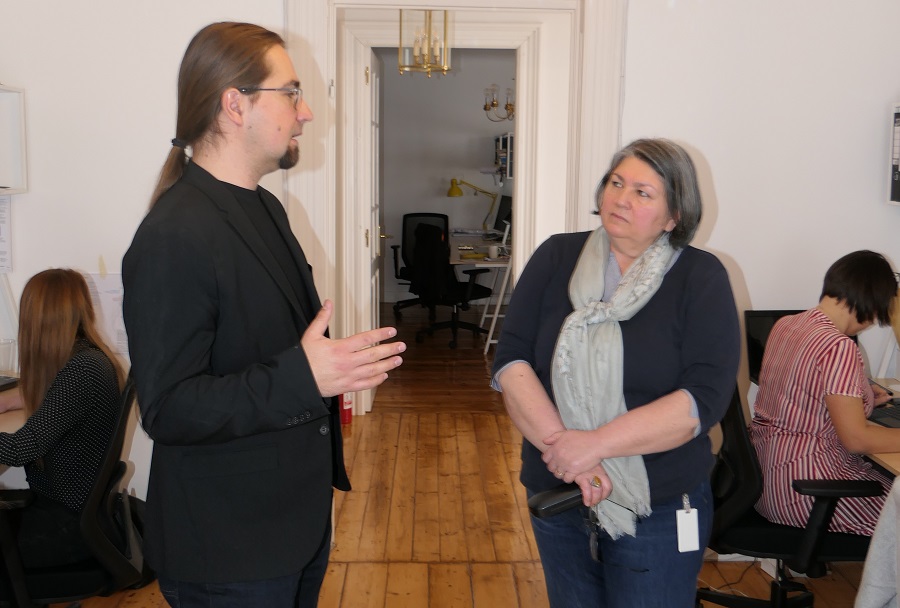
RdL: Creative Engineering is already a well-known, sought-after and appreciated design office. But there is also a perception that it is more expensive.
We deliver performance. Take, for example, the Oradea project (CLT company headquarters). We made the offer, comfortable for us at the time, and the recipient looked at it and said "I'll give you 50% extra, but I want this top project to come out. I want you to give priority and exclusivity in the office and when you're needed, be there." When we were working hard on the design and needed to be with the architecture team, to be more efficient we got in the car and drove to Oradea and stayed there with them until we finished the job in a timely manner. And we delivered. When we needed to, we went to the factory, stressed the hell out of the factory people and delivered. We were the only ones who delivered on time. They gave us the right not to pay the others if we didn't give the technical OK. We took the joinery down 3 times. It wasn't ok as tightness, down! They called the beneficiary's representative to the site. When the representative came, he asked what we said. "- They said to take them down. - Then take them down."
Our projects are above and beyond what is required. Everything is perfect, technically, functionally. We have installation manuals. We work 5-7 times more than the average design office. We deliver quality, we have never delivered below the quality standards we knew we had to deliver. There have been cases where we have told the client that we are not happy with the design solution, to give us 2 more months. And the customer told us that he is satisfied like that. Because a complete and well-done design can save you from a lot of errors, mistakes and especially unforeseen costs on a construction site, where it's much harder to go back than in the office. There have been situations when I have gained from mistakes made by others. We have reviewed projects and optimised them, we have given solutions so that people have made significant savings. And we got paid a percentage of the savings. Because the man kept money in his pocket.
The office is growing as a result of the visibility of the channel soflete.ro, but also the reliability and the complete and correct technical information provided. We still need good engineers, and one of the reasons I started teaching in colleges is to find them.
RdL: Do you only do projects for timber construction?
No, we don't only design with wood, but because of our experience we are often called on sites to assist with wood projects. Wood is a very sensitive material and you design it the way you design it, but if something bubbles up on site, it's much worse. That's why I've been on wood sites a lot. We don't just do wood projects, we do concrete and brick, but we don't necessarily pride ourselves on that. It's just that we're in high demand on wood projects. We've done carbon fiber reinforcement and polymer grids, we've done foundation on metal micropile screws. In addition to wood structures, we've also done masonry structures and metal structures. Metal structures are also very challenging.
Engineering is the science of materials. You need to know how to optimise and make the best use of the resource. That's why we fell in love with CLT. It's not like concrete walls, where I have to make them all 25 cm thick because I can't pour less. With CLT, if this wall is 6 tons and 2 tons are on it, I can make it 6 tons, if this one is 10 tons I can make it 8 tons, this one has 20 tons on it, I can make it 12 tons and so on, piece by piece. On the concrete I have to make them all 25. Then I put the reinforcement in because it has to have minimum reinforcement, then the cracking occurs. Put some more reinforcement in for cracking, then you drop your shear strength, put more reinforcement in for shear strength, then supplement the reinforcement for the bending moment because you have to have maximum bending and shear capacity and so on. And you're running out of rebar concrete, over rebar, over bars, over more bars. You've still got the coefficient of error because you pour that one wrong, it's raining, the concrete doesn't mix right, I don't know what. And you don't feel that it's engineering, that you can work challengingly with concrete. You can do interesting things with concrete, but not in Romania, with the existing seismic activity. You have heavy structures, concrete is heavy, the seismic force is directly proportional to the mass of the building, and the material immediately takes it. You put more material to make it stronger and the house becomes heavier and the effect of the seismic force even greater. It's not ok and somewhere you have to cut that process. And where do you cut it? From the ground up, you change the material.
CLT is ok also because in cities you are limited by space, by neighbours, by law. By building with it you can reduce the size of walls and gain useful space. For example, on one of my projects I reduced the walls all around the building, gaining a total of 40 sqm of usable space compared to the same allowable building area.
RdL: Why do you put such an emphasis on information?
My fundamental goal is to teach people to build better. There are at least 25,000 building permits a year, there are at least 10,000 houses being built a year. Our quality of life is influenced by the environment we live in. And we live 80% of the time in housing: offices, schools, kindergartens and most of all, housing. And they are very often ugly and badly made. We shut ourselves up a lot because of where we live. My philosophy is to help people the best I know how, that is, to help them build better. When you build a house you make a decision that affects you for the rest of your life. You kill 2-5 years of your nerves when you build the house. If it doesn't go well, if the conditions are not right, people are sad and I don't like to see sad people.
I don't want to do projects that are repetitive or that don't add value, so I got into educating others. I want to do courses and tell them: you all have the capacity to deliver performance, then deliver performance. I have been and am willing to do courses with manufacturers or suppliers to actually train their people. I've had cases with suppliers who have said they want in-house training, for sales people, to understand the products in terms of the physics, the mechanics of integrating them into construction. There were people who were selling construction products and didn't know why they were selling them, what they were good for. They didn't know how to argue, why you can put the material in one place or why you can't put it in one place.
RdL: Where do you see yourself in the near future, where do you want to end up?
As a design office we want to be the reference office in construction. We want to be in the top 5 design and engineering offices in the country and the reference office in timber construction. We want to be the office that brings innovation in construction in Romania. We made the first construction on CLT in the country, we turned it into a mass product, we developed timber frame constructions, we made the first houses on metal screw foundations, we made the first buildings on thermal insulating foundations made of glass foam gravel. And at the blog level, I want to be the voice of reference in construction, the one who sets the tone. I know, it sounds unassuming and I don't mean to sound arrogant, but I simply saw that there is no credibility in the market and no accurate information.
And all this leads to my dream of late - a construction academy. An academy like we saw in Germany, a place where if you want to be an architect, carpenter, joiner, builder, craftsman, joiner, window man, you can come and get your information from one place. That's my dream.
In the middle of them being in Creative Engineering, I asked them why I should build a wooden house. There was a brief moment of wondering pause, as if they were all wondering if I had understood anything from my meeting with them. Because it's a sustainable way of building, came at one point a timid response. I pushed the note and told them that maybe I don't care what comes after me, if my grandchildren will have forests, clean air and a pleasant living environment in the house. Then you don't deserve a wooden house - the answer fell out. The answer that echoed in my head long after I left. Yes, we don't deserve a wooden house if we don't care about what comes after us, if we don't care about building well and correctly, if we don't care about having a house that makes us happy. Because a wooden house is a premium product.

















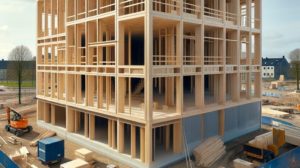
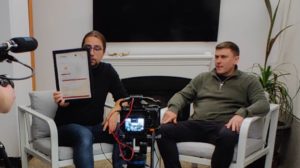
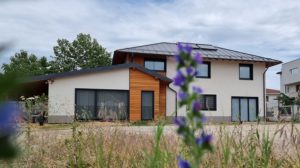
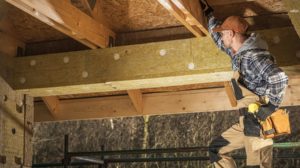
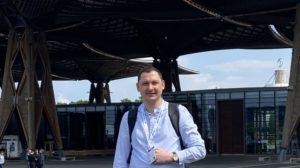
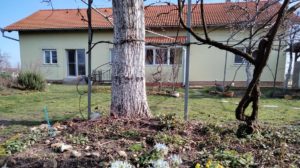
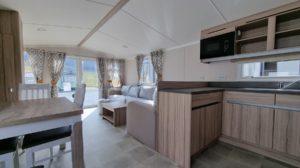
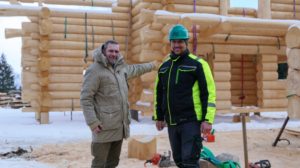
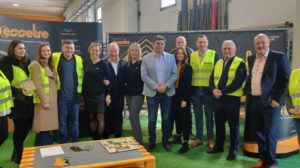
This whole wood house to build sustainably thing, I don't know how much it catches on. It's more hipster if you ask me. I mean there's no point me wanting a sustainable house if it costs me 30-50% more. Until then, sustainable house goes through the stomach. If you don't have anything to eat after you build your house, there's no point in it being sustainable, because it doesn't feed you. I admire soflete and would like to collaborate in the future, but unfortunately, for 90% of those who want a house, I think it's expensive. Maybe I'm wrong, but I couldn't find anywhere a rate for his/their services.